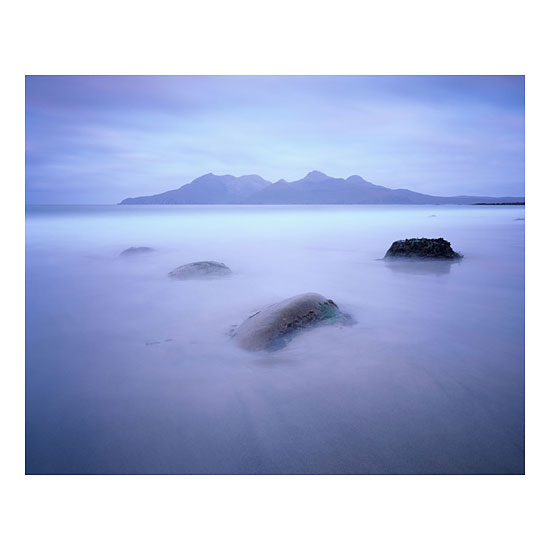I'm on the isle of Jura on the west coast of Scotland this week for some private time away from running my workshop business.

It's so quiet that we've been discussing how just the little noises seem to be the main background soundtrack to life here. For instance, the water in the nearby stream and the wind rustling through the leaves of the trees and of course the bird song, are our new audio backdrop.
And this has got me thinking about a time I used to visit my dad, when he lived on the isle of Seal (an even smaller, quieter Scottish island). Where he lived, there was no city-noise - no noise pollution to speak of. When things get so quiet, you tend to notice the smaller sounds.
I remember one night hearing a car which sounded like it was maybe just outside the house. My dad told me it was perhaps a mile or so away and this made me realise that in towns, the background-noise levels are so high, that I've gotten so used to filtering it out, to not pay attention to it.
The same can be said about light. At my dad's house, with no street lights - it was so dark outside - that I couldn't see two feet in front of me. I had to go back to his house to get a torch so I could go and fetch something from my car just outside. Another time I was visiting, the moon lit up the landscape for miles and I could see without any need for a torch.
I think that when we live in cities, we are bombarded by light and sound pollution. So much so, that we spend most of our time filtering it out. We learn to become sensory-numb to our surroundings, otherwise it's simply too much to handle.
In landscape photography, having a keen sense of visual awareness can help improve our compositions. I've noticed over the years of running workshops that many participants tell me it takes them a day or two to get into the mode of 'seeing'. I'm wondering if it's because we have taught ourselves to filter things out whilst living in cities and when we venture into nature, we have to reverse that, and pay attention to even the smallest visual detail. This takes a lot of effort and 're-learning'.
While I was running a workshop on Eigg, we had the sun rising behind us. Everyone wanted to go that direction (I personally hate shooting into the sun or towards a sunrise or sunset), but I maintained that we stay where we were, as during sunrise and sunset, the colour temperature all over the sky is really beautiful - not just in the direction of where the sun is. My reason for staying where we were was because the tones are easier to shoot at 180 degrees to the sun.
I think it's very easy to latch on to the obvious blazing sunrise or sunset colours, and to believe that the colours are only evident in the direction where the sun is, but if we take time to consider the softer tones around the entire sky, we can see that they are evident everywhere. Only we tend to filter them out. I think this is a case in point of us looking but not 'seeing'. In other words, we are filtering out qualities in the landscape because they are too subtle for our overly de-sensitised nervous system.
Before I finish this post today, I'll tell you one more account. Last year while running a workshop on the same island, we were looking at the clouds being lit up by the sunrise and I asked each member of my party what colour the clouds were. Half of them stated that the clouds were grey while the other half correctly stated that the clouds had a magenta colour to them. It's interesting to see that some of us have to work hard to notice the subtle differences in tone and colour around us.
In our everyday encounters, we are very seldom asked to consider colours, or subtleties of tone. I think this is perhaps why many of us love photography in the first place - because it allows us the luxury to spend time thinking about aspects of the world around us that we rarely get a chance to enjoy.
Being a good photographer has always been about 'seeing', not just looking. I wonder if our city environments are teaching us bad habits by encouraging us to adopt a level of sensory numbness?
